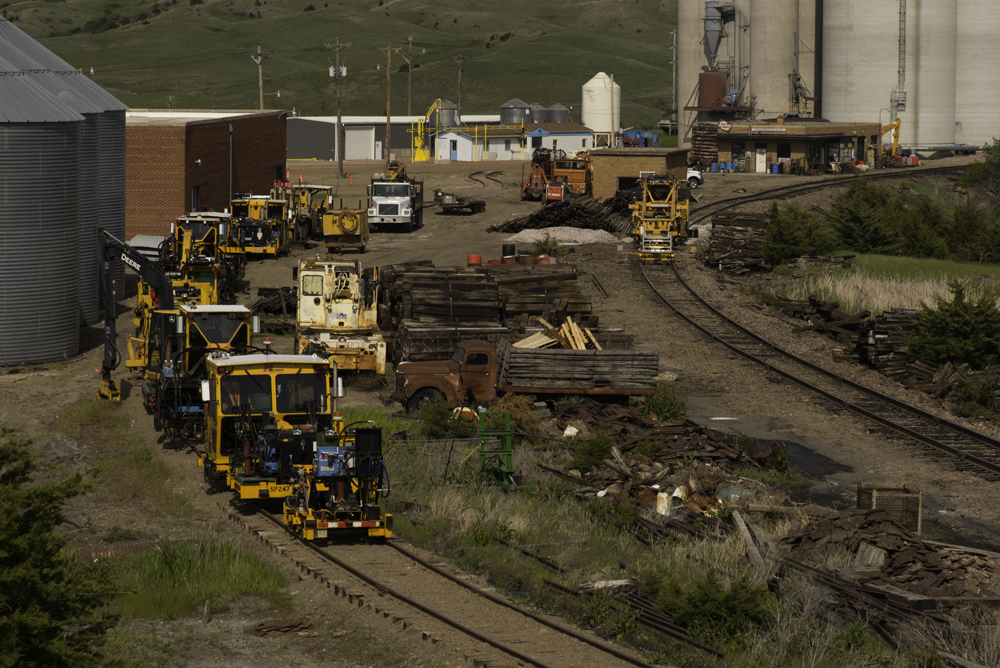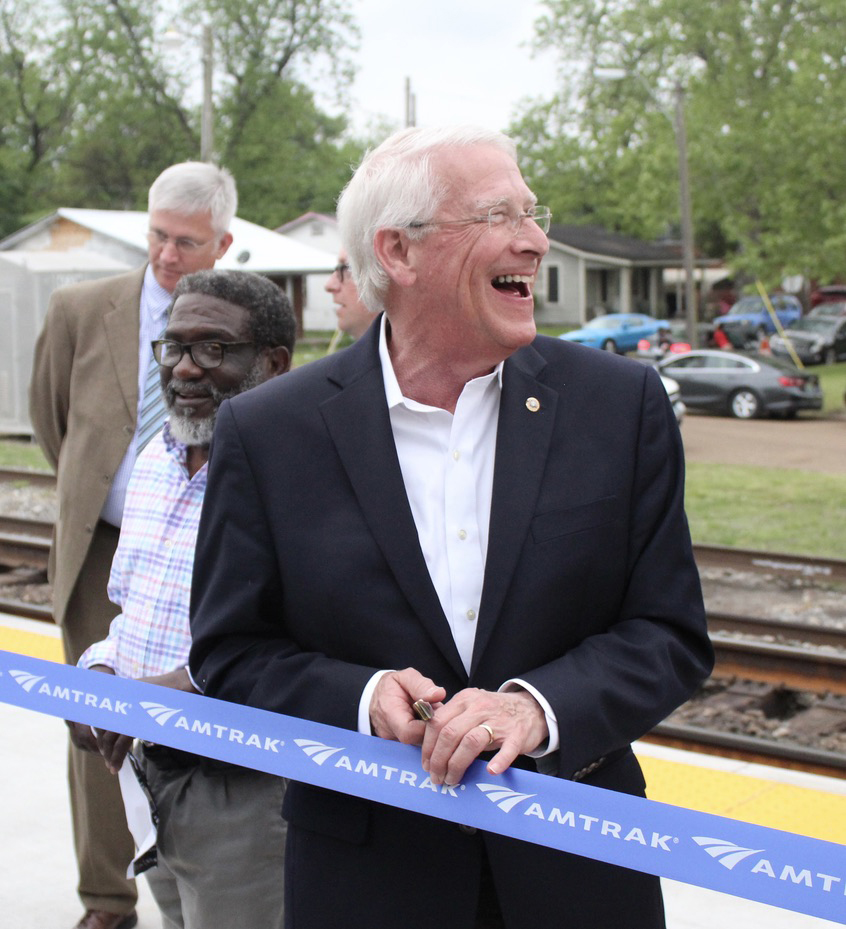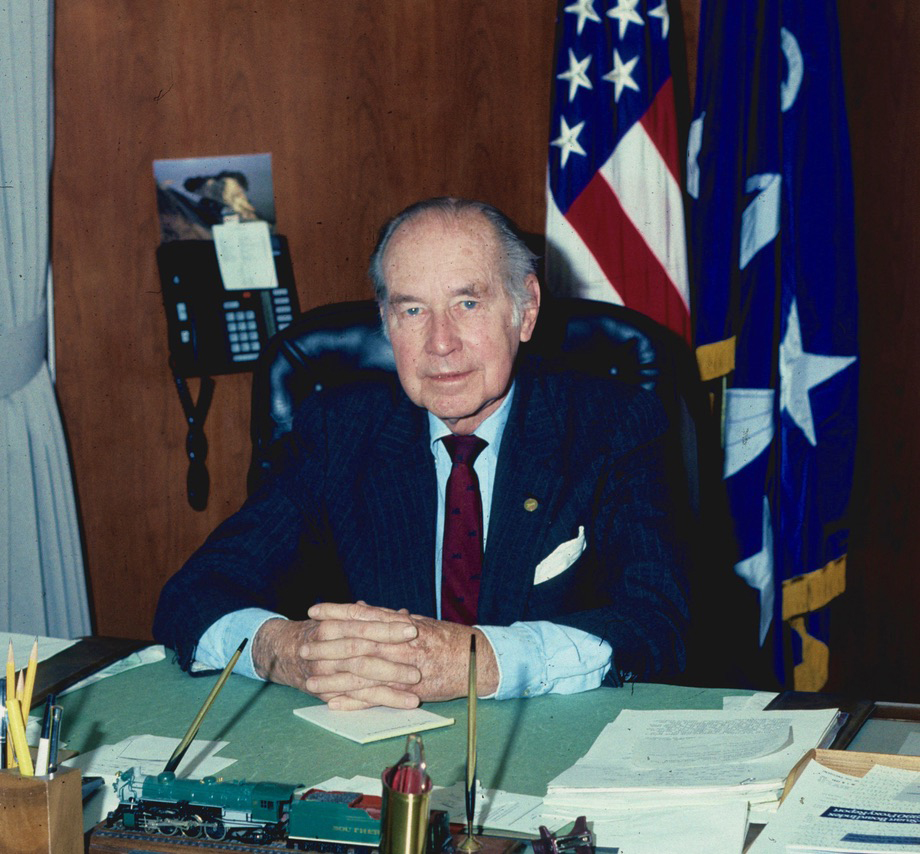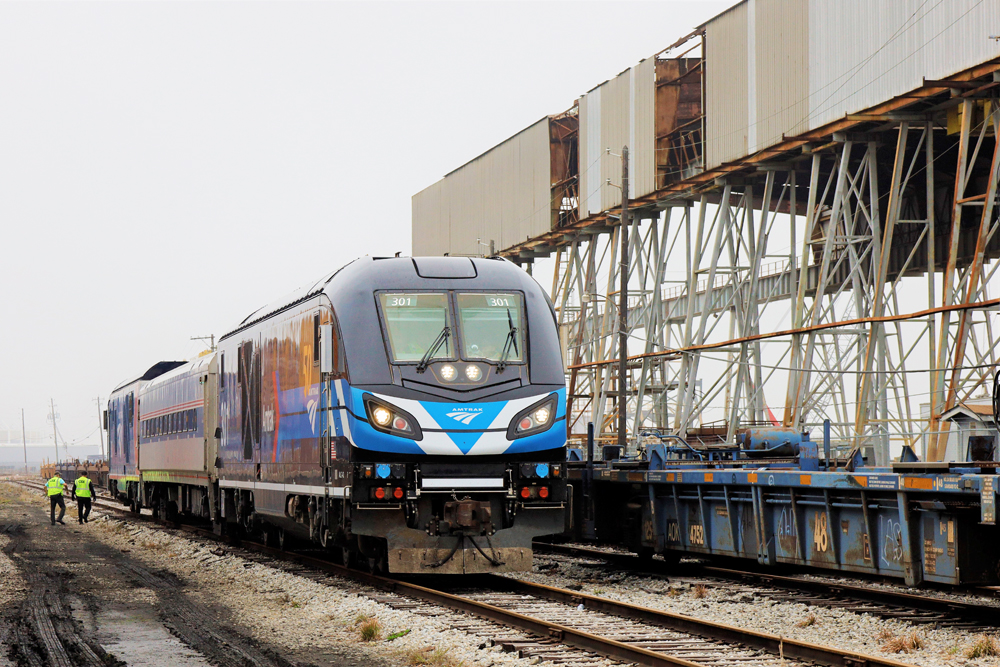WASHINGTON — Historically, passenger rail funding has had legislative champions from each party in the House and Senate that successfully counteracted executive branch funding cuts. When President Donald Trump called for deep reductions aimed at Amtrak’s long-distance network during his first term, those budget proposals were eventually rebuffed in bipartisan transportation spending deals.
But this year, U.S. Senate confirmation of Trump’s most controversial cabinet appointees, Robert F. Kennedy Jr., and Tulsi Gabbard, behind near-unanimous Republican support — as well as lawmaker acquiesce to sweeping federal workforce cuts — make it uncertain whether guardrails Amtrak has relied upon in the past will protect the national network from starvation.
FRA grant-review logjam
Observers tell Trains News Wire that the case for rail passenger service preservation and expansion hasn’t been helped by a torturous Federal Railroad Administration approval process of grant applications for Bipartisan Infrastructure Law and Infrastructure Investment and Jobs Act money.
“If the goal is to actually expand and improve passenger rail during a timeline elected officials can support, then you have to streamline the process so that the funds are promptly distributed to the people who do the work,” says former Amtrak board chairman and current Transportation for America Chairman John Robert Smith.
Some projects are finally moving ahead, such as construction of a pocket track and platform in Mobile, Ala., that CSX and Amtrak agree is required before two daily round trips to New Orleans can commence. Service there is now expected to begin in June at the earliest.
But funds from most of the FRA’s 69 Corridor Identification grants, providing $500,000 for planning work, have not been distributed. This is also true for Interstate Rail Compact, Consolidated Rail and Safety Improvement (CRISI), and Restoration and Enhancement grants (where federal money helps states begin operations).
Once a recipient is notified that its application has been accepted, a back-and-forth negotiation between the grantee or its consultant and the FRA takes place; separate obligation and formal grant agreement stages spell out work the agency will reimburse. However, the FRA has also recently demanded an additional step: development of a “project performance plan” before money can be accessed. While ensuring compliance, these sequential negotiations significantly lengthen the process. Thus, very little money has been made available for reimbursement.

Meanwhile, the Trump administration’s vow to withhold funds from projects already awarded “that are in conflict with administration priorities” has resulted in widespread apprehension among grant recipients and their contractors.
Transportation Secretary Sean Duffy’s memo calling for “reliance upon sound economic analysis” in DOT policies, programs, and activities adds adds fuel to the fire.
That memo has drawn attention for calling for funding preference for communities with marriage and birth rates higher than the national average [see “Trump administration shakes up funding formulas …,” News Wire, Feb. 4, 2025]. But it also says each agency can “unilaterally amend the general terms and conditions as necessary to ensure compliance with federal law and consistency with this Order, and provide corresponding notice of such to recipients.” It sets Tuesday, Feb. 18, as the date by which all existing grant and loan agreements are to be reviewed by the FRA and other DOT departments.
The memo suggests grants “used to further local political objectives or for projects and goals that are purely local in nature and unrelated to a proper Federal interest” should be withdrawn.
Amtrak’s independence
How these policies may affect existing passenger service funding and oversight remain unclear.
Republicans Ronald Reagan, George H.W. Bush, and George W. Bush all attempted to “zero out” Amtrak money in many of the annual budgets they sent to Congress. The Democratic administrations of Jimmy Carter and Bill Clinton inflicted spending slashes responsible for 1979, 1995, and 1997 long-distance route rescissions, but the rest of the system stayed intact.

In late December, a bipartisan coalition of rural and urban U.S. Senators led the effort to confirm a geographically and politically diverse slate of Amtrak Board of Directors members committed to preserving a national system and exercising more management oversight. One board vacancy remains available to be filled by President Trump. Additionally, Republicans such as U.S. Sens. Jerry Moran of Kansas and Roger Wicker of Mississippi have been vocal about improving and preserving passenger service through their states.
In the House, a contingent of Republican lawmakers from rural districts — both with and without Amtrak long-distance service — judges Amtrak by whether the quasi-public company is ”profitable.”
The incoming Transportation and Infrastructure Rail Subcommittee chairman, Daniel Webster (R-Fla.) reinforced that view at his initial hearing [see “Rail industry outlines legislative priorities …,” News Wire, Jan. 23, 2025]. “For Amtrak,” Webster said in his opening remarks, “we must look at improving and maintaining its existing network, weaning it off government support, and providing competitive, reliable, and safe service to attract riders.” Webster represents a district northwest of Orlando now only served by a Jacksonville-Lakeland, Fla., Amtrak Thruway bus connecting with the Floridian. He also said, “Passenger rail works best where demand is high, competition and private sector involvement are ample, and a dependence of government support is low,” but it should only “serve as an appealing option for travel, not as a replacement for vehicles and airplanes, which remain the overwhelming preference for Americans.”
On the other hand, Speaker of the House Mike Johnson represents northwest Louisiana. He and other Louisiana and Mississippi legislators have expressed support of the Southern Rail Commission’s efforts to bring an extension of the Crescent through their districts from Meridian, Miss., to Fort Worth, Tex. The long-sought project, among those awarded a Corridor ID planning grant, dates from the time John Robert Smith was Chairman of the Amtrak Board. Smith and Vice Chairman Michael Dukakis brought in David Gunn to run Amtrak in early 2002 when it was teetering on the brink of bankruptcy.

Reached by phone at his Nova Scotia home, Gunn tells News Wire he was able to restore efficiency to the company despite threats of a shutdown from Norman Mineta, the Bush administration’s transportation secretary. “I cleaned up a lot of confusion about who was doing what,” he recalls.
Amtrak presidents such as Gunn and W. Graham Claytor, Jr., who took on the Reagan Administration’s cost-cutting budget hawk David Stockman, had powerful lawmakers at their backs to help weather past storms. Given a so-far subservient relationship of congressional Republican majorities to the President, it remains to be seen who might step up should blanket cuts be proposed. In the current environment, forceful engagement by Amtrak’s newly-installed board — the product of bipartisan compromise — could play a decisive role.

